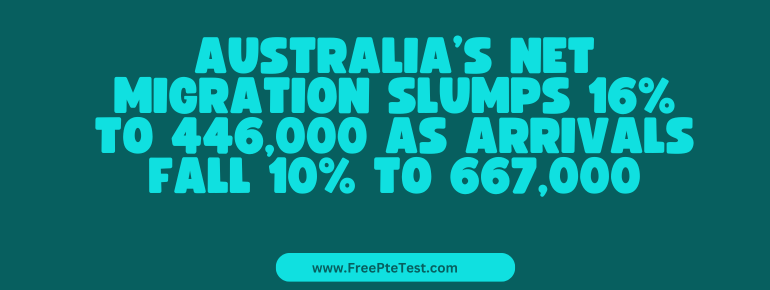Australia’s net migration has experienced a notable decline, dropping by 16% to 446,000 for the financial year ending June 30, 2024. This marks the first decrease in net overseas migration since the country reopened its borders following COVID-19 restrictions in 2021-22.
The previous year’s figure stood at 536,000, indicating a significant shift in migration patterns, as the Australian Bureau of Statistics (ABS) reported.
Key Statistics
- Net Migration: 446,000 (down from 536,000)
- Migrant Arrivals: 667,000 (down by 10% from 739,000)
- Migrant Departures: 221,000 (up by 8% from 204,000)
Factors Contributing to the Decline
The decline in net migration is attributed to several factors:
- Decrease in International Students: The number of international students arriving in Australia fell sharply by nearly 26%, from 278,000 to 207,000. This reduction is linked to rising visa fees, living costs, and a proposed cap on student inflow.
- Increase in Departures: There has been a notable increase in migrant departures, particularly among temporary visa holders. Departures on temporary student visas doubled compared to the previous year.
Demographics of Migrants
The median age of migrant arrivals was 27 years, while that of departures was slightly older at 31 years. This reflects a trend where younger individuals come to Australia for education or temporary work but later return to their home countries or relocate elsewhere.
Source Countries
India remains the largest source of migrants, with approximately 87,600 arrivals in FY 2023-24, despite a decline of nearly 19% from the previous year. China followed with about 75,830 arrivals, marking an 8% decrease from the prior year.
Implications
This shift in migration dynamics suggests that Australia is experiencing a stabilization period after a surge in arrivals post-pandemic. The ABS noted that this trend reflects a normalization of migration patterns after years of unprecedented increases due to catch-up arrivals following border restrictions.
While Australia continues to attract migrants, particularly international students, the recent data indicates a need for policy adjustments and considerations regarding the factors influencing these trends.



